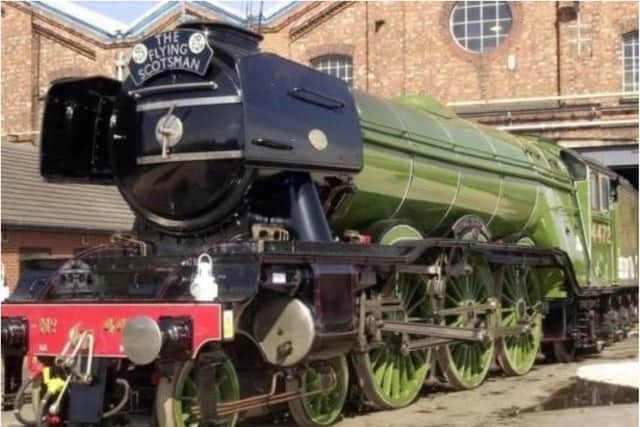Birthplace of iconic Doncaster locos safe as fears grow over future of Plant Works site
and live on Freeview channel 276
A cavernous brick building at the centre of the Hexthorpe site – known as the New Erecting Shop – was where both the world famous Flying Scotsman and Mallard were conceived, designed and built, helping cement Doncaster's status as a capital of railway engineering.
The building was given Grade II listed status five years ago.
Advertisement
Hide AdAdvertisement
Hide AdBut earlier this year, Wabtec, the current owners of the site announced huge job losses, sparking concenrns over the complete closure of the Plant site and fears for the building.


Railway enthusiast Barry Lifsey spent a lengthy campaign to get the building recognised as an important part of the nation's heritage and has now been assured by Historic England that the building will remain safe.
A Historic England spokesman said: “Grade II signifies that they are of national special interest, which will have to be taken into consideration in any plans for the site going forward.”
Mr Lifsey, who spent nearly three decades repairing and working on dozens of trains at the sprawling industrial site, spearheaded the drive to get the New Erecting Shop its Grade II status several years ago. The building will be 130 years old next year.
Advertisement
Hide AdAdvertisement
Hide AdBoth the Flying Scotsman and Mallard are synonymous with the golden age of steam railways – the former one of the world’s best known locomotives after becoming the first steam loco to smash the 100mph barrier while Mallard, which arrived 15 years later also retains its place in the record books as the holder of the fastest steam train ever built.
His mission to give the workshop the status it deserves got underway while discussing his days at the Plant, now owned and run by Wabtec Rail, with former colleagues.
“We were just saying how sad it was to see Doncaster’s heritage being lost,” said Barry, of Finningley.
“I did a bit of digging around, looking at the history and found that the the new erecting shop didn’t have listed building status. That started the ball rolling,” said Barry, who started work at the Hexthorpe Road site in 1958 as an office boy.
Advertisement
Hide AdAdvertisement
Hide AdHe spent the next eighteen months poring over books, documents and photographs, visiting Doncaster libraries and scouring through the borough archives to prepare a detailed report for English Heritage, pressing for the preservation of the huge building, which has two fitting bays and where more than 2,000 steam locomotives were built.
In June, Wabtec Rail, announced plans to axe 450 jobs at its Doncaster factory.
Bosses from the RMT rail union say the firm has hinted it could close the works completely and sell off the land – in addition to an increased number of job losses.
Mick Cash, general secretary of the Rail, Maritime and Transport Workers’ Union said: “Wabtec has also hinted that it may even close the entire site down and sell off the premises and land.
Advertisement
Hide AdAdvertisement
Hide Ad“We will not accept our members being treated in the way that Wabtec are trying to do and are wholly against any redundancies. We are obviously in very difficult and worrying times for workers throughout our industry, but the way in which Wabtec management are acting in this manner is quite unacceptable.
The union says employees will go between August and March 2021 but there will be more than 100 redundancies in August.
Wabtec Corporation is headquartered in Pittsburgh, Pennsylvania, USA. It employs 27,000 people in 50 countries and supplies components and services to the global rail industry. It is one of the 500 largest firms in the US and has $8bn turnover.
The Doncaster Works, on a 22-acre site beside the East Coast mainline, has a long history in the construction and maintenance of trains.